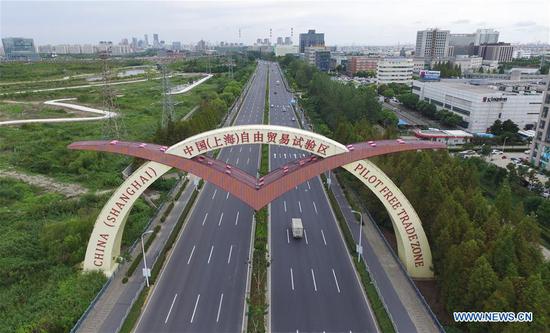New urban plan caps population at 25m, leaves just 55 sq km to build
China has set a population ceiling of 25 million and a limit on construction land of no more than 3,200 square kilometers for Shanghai through 2035, allowing the city to grow by about 800,000 new permanent residents.
The city has to stringently control its size while the overall land for construction decreases over time, according to an overall urban plan for Shanghai (2017-35) released by the State Council on Monday.
In 2016, Shanghai had about 24.19 million permanent residents, according to local authorities. As one of the most developed industrial hubs in China, Shanghai had already used 3,145 square kilometers in construction land through 2015, which accounted for 45 percent of the city's area. The ratio was much higher than other international megacities around the world, which usually fall in the 20 percent to 30 percent range. It means by the end of 2035 about 55 square kilometers can be used to build structures.
Shanghai is among four first-tier cities, along with Beijing, Guangzhou and Shenzhen in Guangdong province.
The plan set limits for Shanghai in four categories - population size, the amount of land for construction, environmental maintenance and urban security - while the city was called to explore new development models for megacities.
Shanghai is one of China's four municipalities - cities with provincial-level authority - and has been a center for international trade, finance and innovation, the plan said.
Shanghai is expected to play a central role in strengthening coordination with neighboring cities and building a world-famous city cluster in the Yangtze River Delta.
Any city plan will set a ceiling for local populations and construction land, but Shanghai's goal to control population attracts more attention because it has been an engine for the national economy and houses thousands of migrant workers from all over the country, said Xia Xueluan, a professor of sociology at Sanya University in Hainan province.
The population in first-tier cities like Shanghai cannot expand anymore because China now aims for high-quality development and has been committed to diminishing the disparity among developed and less-developed regions since the 19th National Congress of the Communist Party of China, he said.
The goal of balanced development also requires megacities to spread their populations to neighboring areas and build city clusters so resources can be shared, said Hu Xuwei, a researcher of regional economics at the Chinese Academy of Sciences.


















































